Vegan Oat Flour Cake (Gluten Free!)
This post may contain affiliate links. As an Amazon Associate, I earn from qualifying purchases. Please read my disclosure.My easy vegan oat flour cake recipe is irresistibly moist and light, capturing the essence of a classic vanilla cake—but is completely gluten-free, dairy-free and egg-free! Each tender layer is topped with a luscious, vegan-friendly chocolate buttercream frosting that’s rich and creamy. Ideal for anyone looking for a delicious, health-conscious, and inclusive dessert option, my cake is perfect for parties, birthdays, or special occasions! As a bonus, this recipe can also be easily adapted into cupcakes for a fun twist!
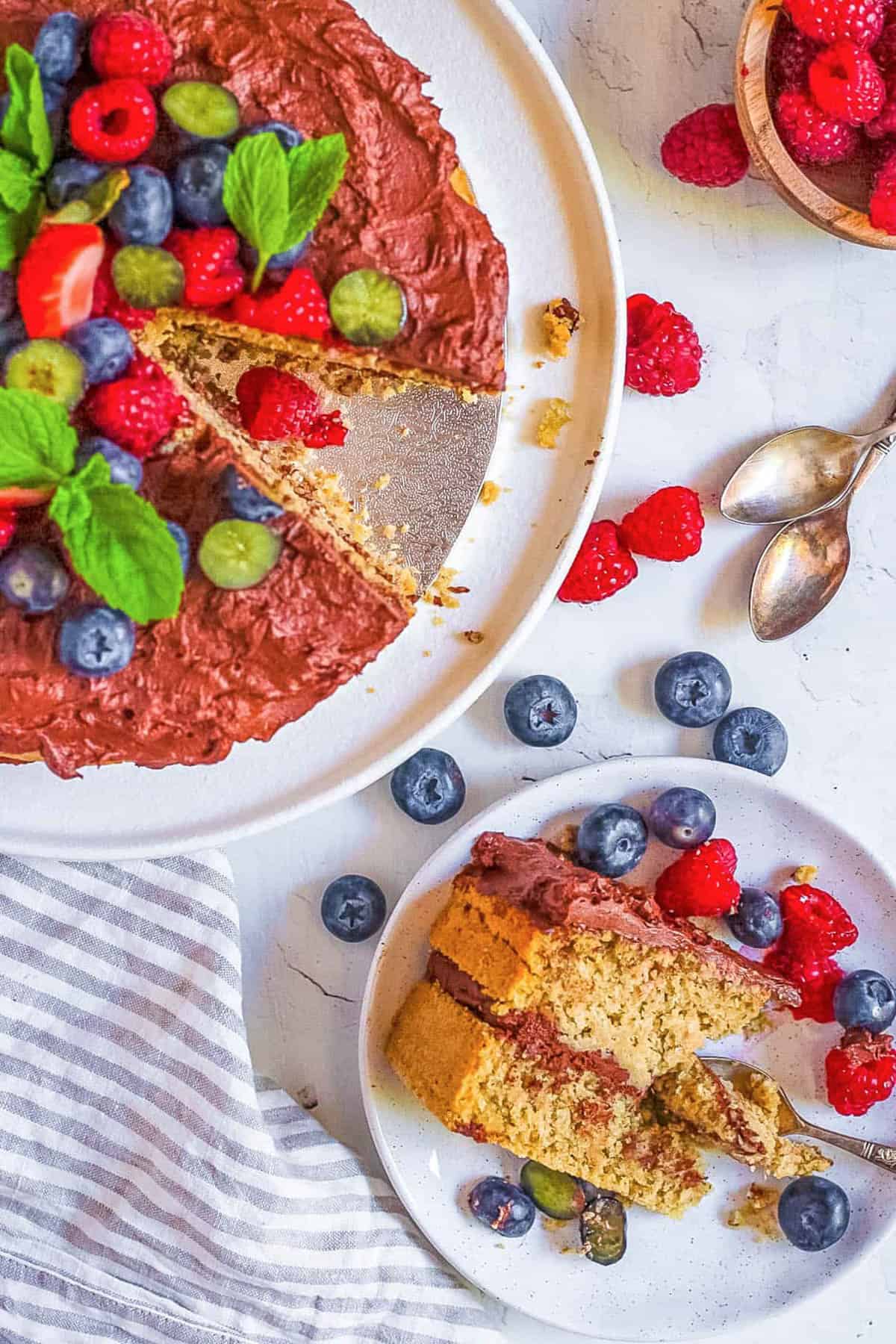
My easy vanilla cake recipe with oat flour tends to disappear quickly at get-togethers. Oat flour behaves similarly to regular flour for an airy and fluffy texture but has the added benefit of being higher in whole grains and gluten-free.
It has a mild flavor that lets the vanilla shine and doesn’t weigh down the cake layers. This healthy vegan oat flour cake recipe is easy to make, and my kids love it too!
For my recipe, I took the time to carefully curate a list of ingredients that are less processed. The cake comes out delicious while still being slightly better for you than a traditional cake! If you’re on the hunt for a drool-worthy gluten-free and vegan cake, this recipe is for you!
If you’re looking for more simple plant-based cake recipes like this one, be sure to check out my vegan smash cake and my vegan olive oil cake. Both are beautiful presentations for a dessert table!
👩🏽🍳 Why I Absolutely Love This Recipe
Once upon a time, if you told me I would be drooling over a gluten-free vegan oat flour cake, I would’ve been shocked. But this recipe tastes just like it came from a delicious high-end bakery.
It’s perfect for my vegan friends and those who have celiac and gluten allergies – but honestly even my friends without dietary restrictions always love it when I serve it. It’s also super easy to make, which is why it is my go-to whenever an event calls for a cake celebration!
I appreciate how this is a healthier cake recipe that doesn’t compromise on taste. Oat flour is the star here, and offers greater nutritional benefits than white flour. It’s rich in dietary fiber, good carbohydrates, protein, and healthy fats. It also boasts a healthy amount of selenium, magnesium, and phosphorus (source).
Despite being free from common allergens, my cake bakes up fluffy with a perfect crumb texture that everyone will love.
This is also a super kid-friendly recipe, and I’ll often get my kids involved in the baking process – they especially love making the frosting and licking the spoon!
My cake is an ideal treat for any celebration. Whether it’s a birthday or random night of the week, I always keep this recipe in my back pocket! It’s beautiful as a layer cake, but it makes decadent cupcakes, too – see my notes below on how to do this!
When I need to plan ahead, I’ll make this in advance and freeze. Then, I’ll defrost and frost before serving for a delicious, homemade dessert ready to go. This vegan gluten-free oat flour cake is the only dessert recipe I’ll ever need!
Latest Recipe Video!
🥘 Ingredients
My oat flour vegan cake requires simple ingredients I pick up at the local grocery store. For celiac diets, be sure to purchase gluten-free certified oats or oat/oatmeal flour.
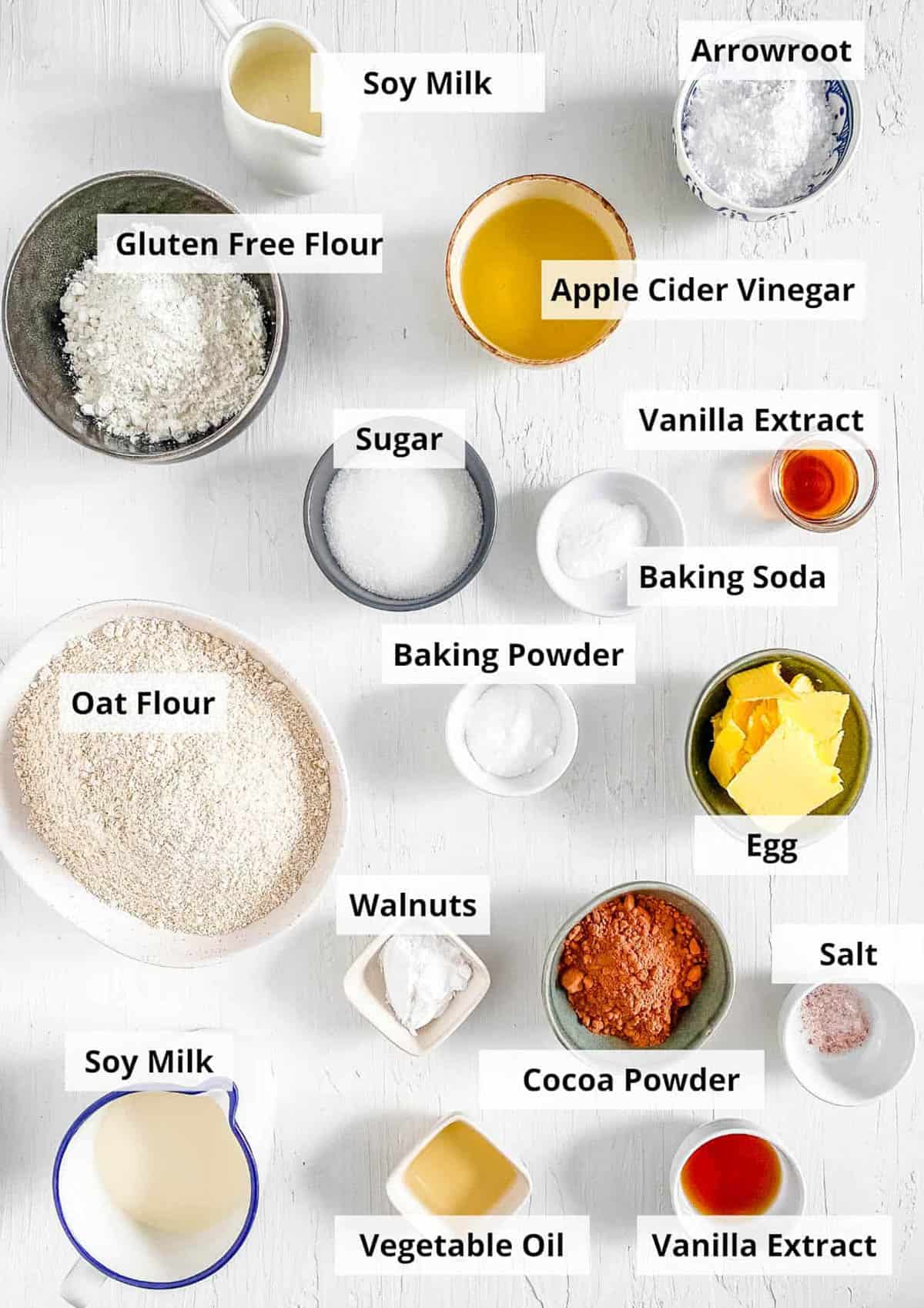
For The Oat Flour Vanilla Cake
Soy Milk & Apple Cider Vinegar: I use this combination to make a dairy-free buttermilk that keeps this vegan oat cake recipe nice and light. Any plant-based milk will work, but soy, almond, and coconut milk are my favorite. They all have a mild flavor and creamy texture.
Oat Flour: I make this vegan and gluten free cake with oat flour that I purchase from the store to save time, but it’s simple to make your own oat flour too (see my FAQ section below on how to do this). For store-bought, a few of my top recommendations are Bob’s Red Mill and Arrowhead Mills.
Gluten-Free Flour: A small amount of gluten-free all-purpose flour keeps the fluffy texture of this gluten-free cake spot-on. An oatmeal cake recipe without flour can get dry or dense. My favorite gluten-free flour blend is Bob’s Red Mill 1:1 All-Purpose Gluten-Free Flour. I also use traditional flour when this doesn’t need to be gluten-free.
Arrowroot: Arrowroot is a starchy powder that adds moisture and helps bind the cake together. I use tapioca flour or cornstarch as a substitute when I am low on arrowroot.
Sugar: To avoid refined sugar, I use coconut sugar or maple syrup. Both are great options.
Baking Powder & Baking Soda: Leavening agents are essential for any baked goods. They cause the batter to rise and prevent a stodgy or dense cake.
Salt: A little bit of salt goes a long way in desserts, but don’t be tempted to leave it out. Salt accentuates the sweetness!
Oil: I don’t even miss the butter in this recipe! The oil keeps the crumb just as moist! You can also swap the vegetable oil for olive oil or melted coconut oil – both will work well in this oatmeal flour cake.
Vanilla Extract: Sweet vanilla gives this cake its trademark flavor.
Frosting Ingredients
Icing Sugar: Powdered sugar is finer than regular sugar. This results in a silky smooth and irresistible frosting!
Cocoa Powder: For a rich, chocolatey flavor! For a more intense flavor, I use Dutch-processed cocoa.
Vegan Butter: Vegan butter whips up nice, and provides the perfect balance of moisture in this cake.
Unsweetened Soy Milk: I use a small amount of soy milk to keep the frosting from getting too thick. Any plant-based milk works great if you prefer something different.
🔪 How To Make A Vegan Oat Flour Cake
Learn how to make my vegan oat flour vanilla cake in just a few steps. I’ve created a summary of instructions below, but see the recipe card at the end of this post for the complete recipe with ingredients and instructions.
Preheat Oven & Prep Cake Tin: Before beginning, I preheat my oven to 350 degrees Fahrenheit. Then, I line an 8-inch round cake pan with parchment paper.
Prepare Vegan Buttermilk: To make the vegan buttermilk, I whisk together the soy milk and apple cider vinegar in a large mixing bowl. I set this aside to thicken for about 5-10 minutes, or until it begins to curdle slightly.
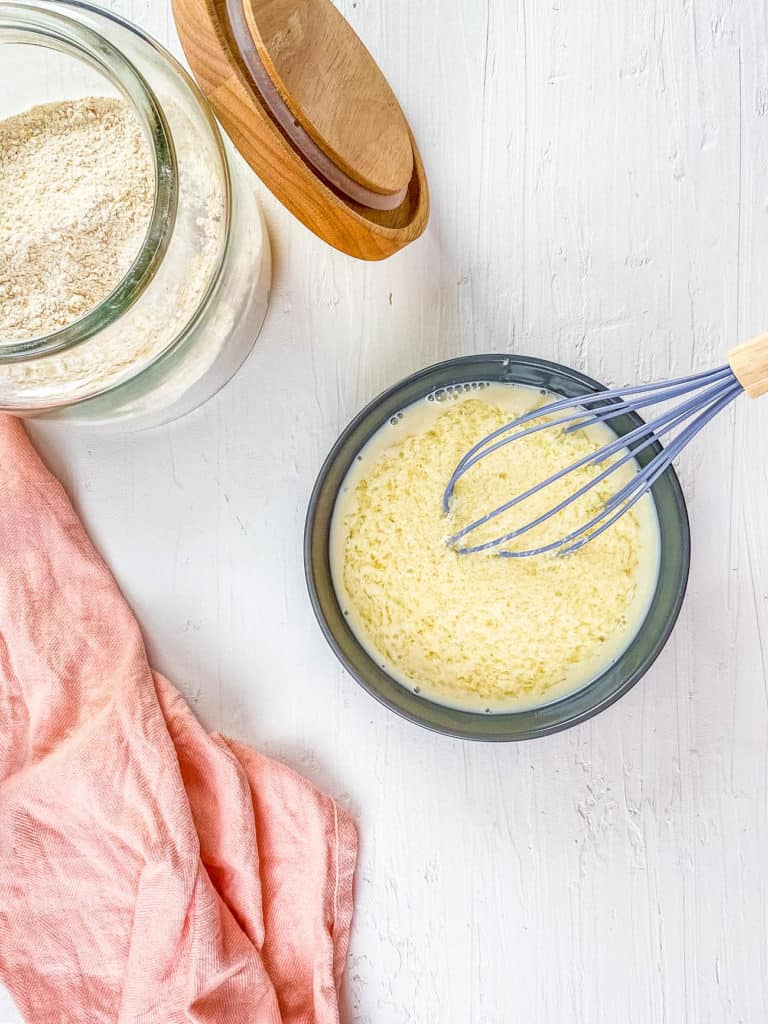
Combine Dry Ingredients: To make the batter, I combine the oat and gluten-free flour, arrowroot, sugar, baking powder, baking soda, and salt in another large bowl.
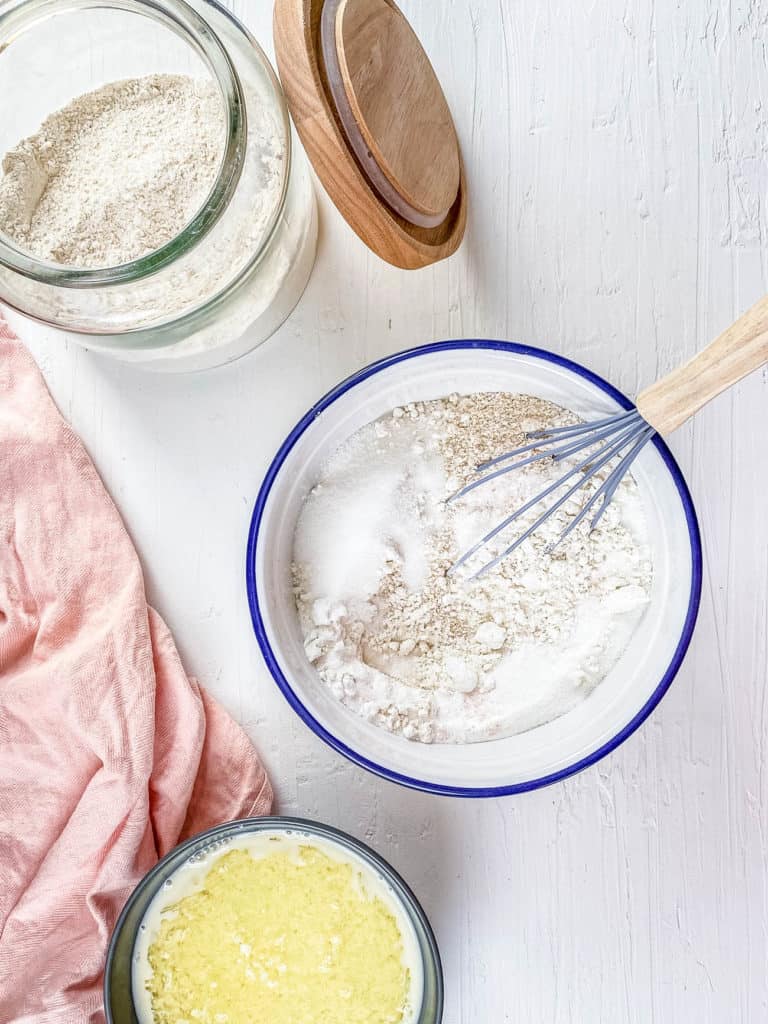
Add Wet Ingredients: Then, I pour the soy milk mixture, oil, and vanilla into the dry ingredients and stir well.
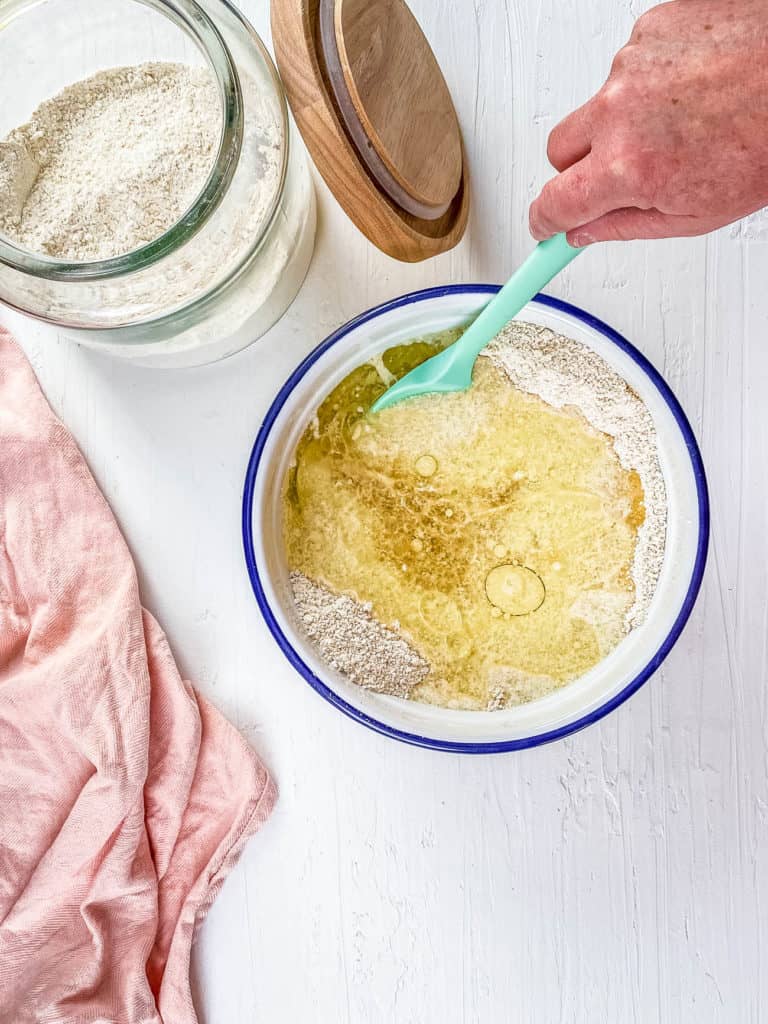
Bake Cake: Next, I pour the cake batter into the prepared pan and bake for 35 to 45 minutes or until a toothpick comes out clean.
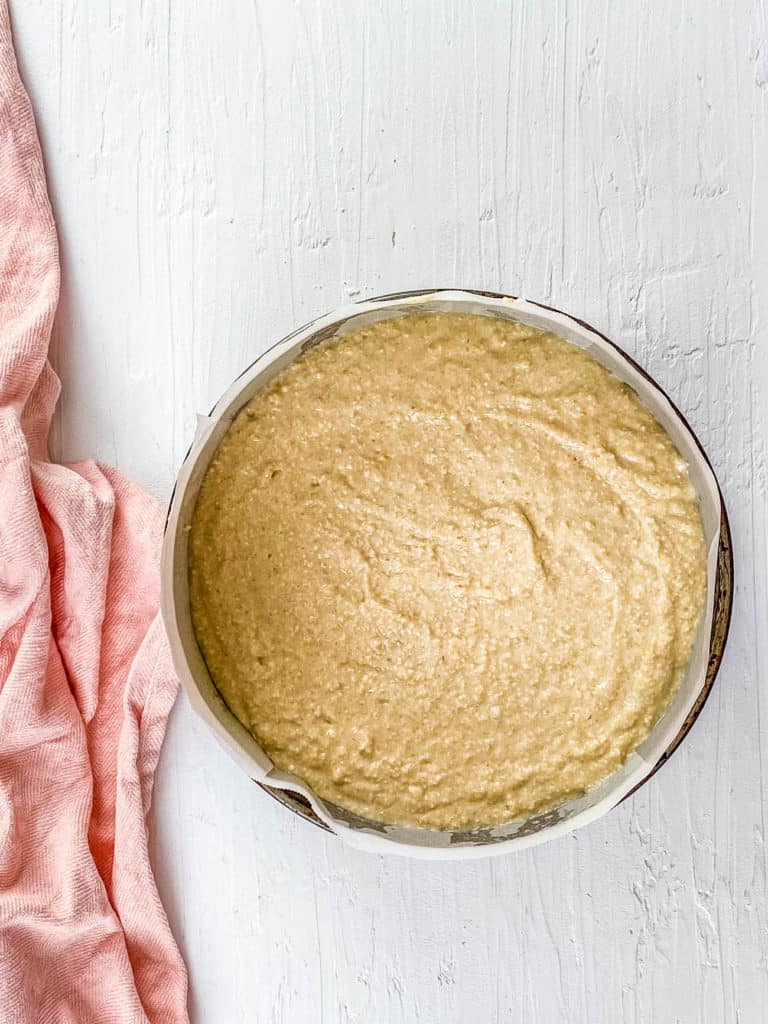
Let Cool: When it’s done, I carefully remove the cake from the oven and let it cool for 10 minutes before turning it out to cool on a wire rack. I’ve found that if I don’t allow the cake to cool before transferring it to a rack, the cake will fall apart. Once it’s completely cool, I slice it in half and set it aside.
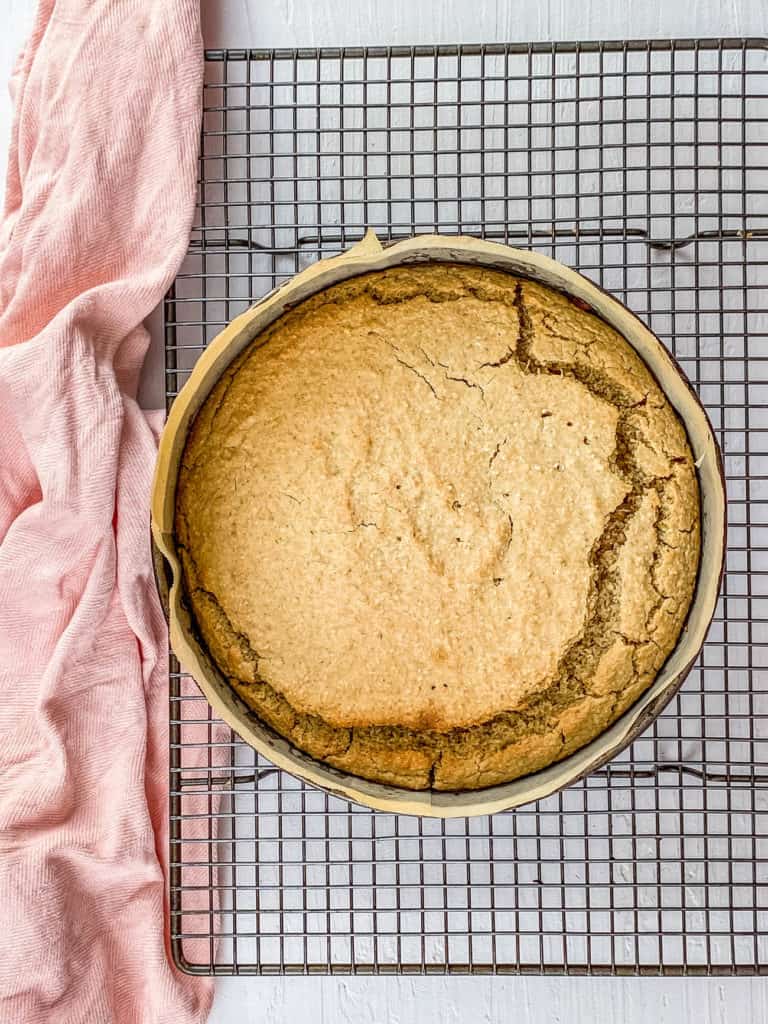
Whip Butter: Using a stand mixer or hand mixer and a medium bowl, I whip the vegan butter on high speed until fluffy.
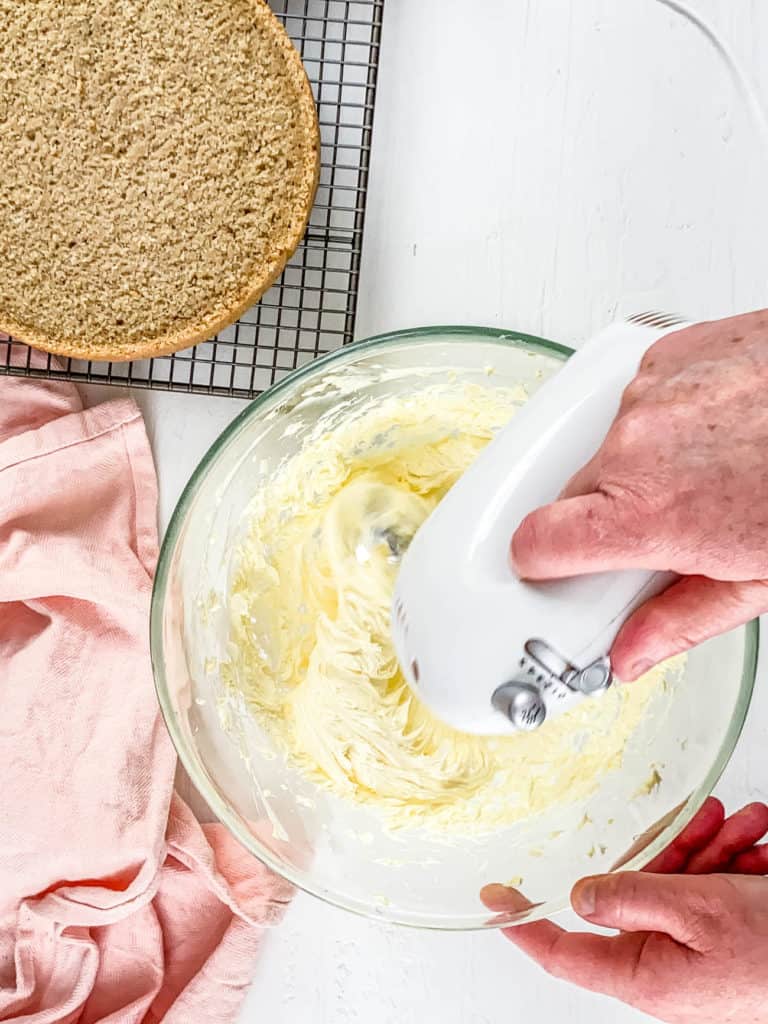
Combine Frosting Ingredients: Then, I add half of the cocoa powder and powdered sugar to the butter and mix on low speed until combined. After that, I add the remaining ingredients and whip until smooth.
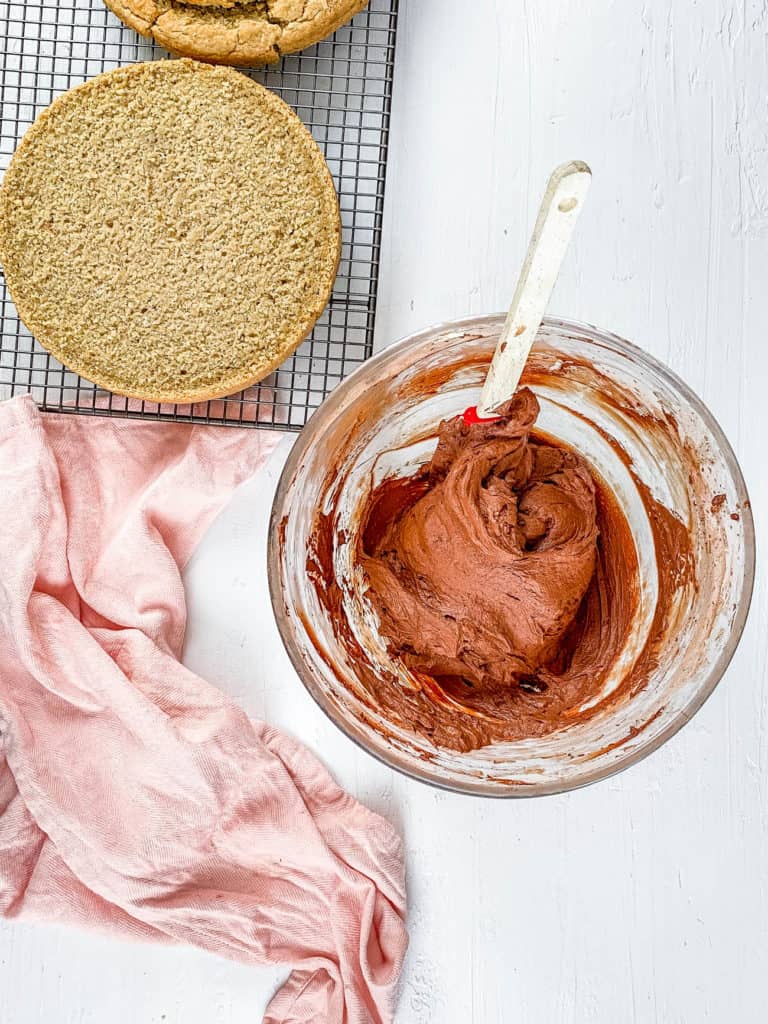
Frost Cake & Enjoy: I use an offset spatula to spread an even layer of frosting on the bottom layer of the cooled cake.
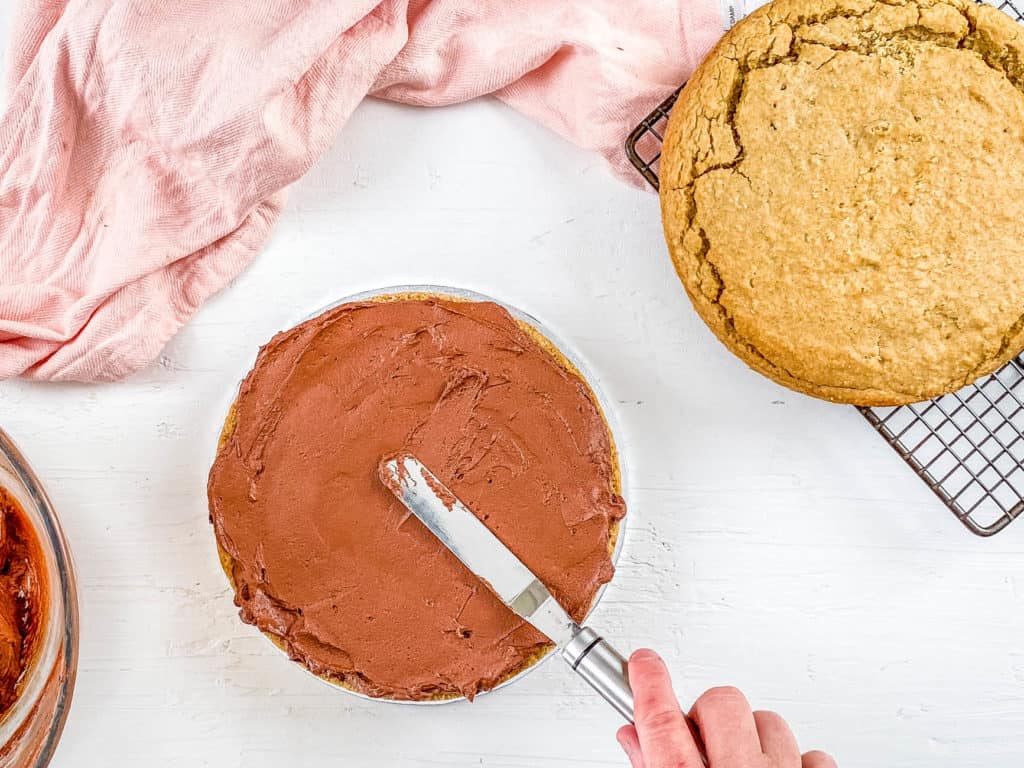
Finish & Decorate: Then, I place the second layer of cake on top and finish frosting the rest of the cake. I love the trending look of a “naked” layered cake, where the sides of the cake are either left bare or have a very thin layer of frosting, allowing the layers and filling to be visible. That’s how I typically frost this cake, but you could add frosting to the sides as well if you wanted to! Sometimes, I add sprinkles or berries on top of the cake before serving as well.
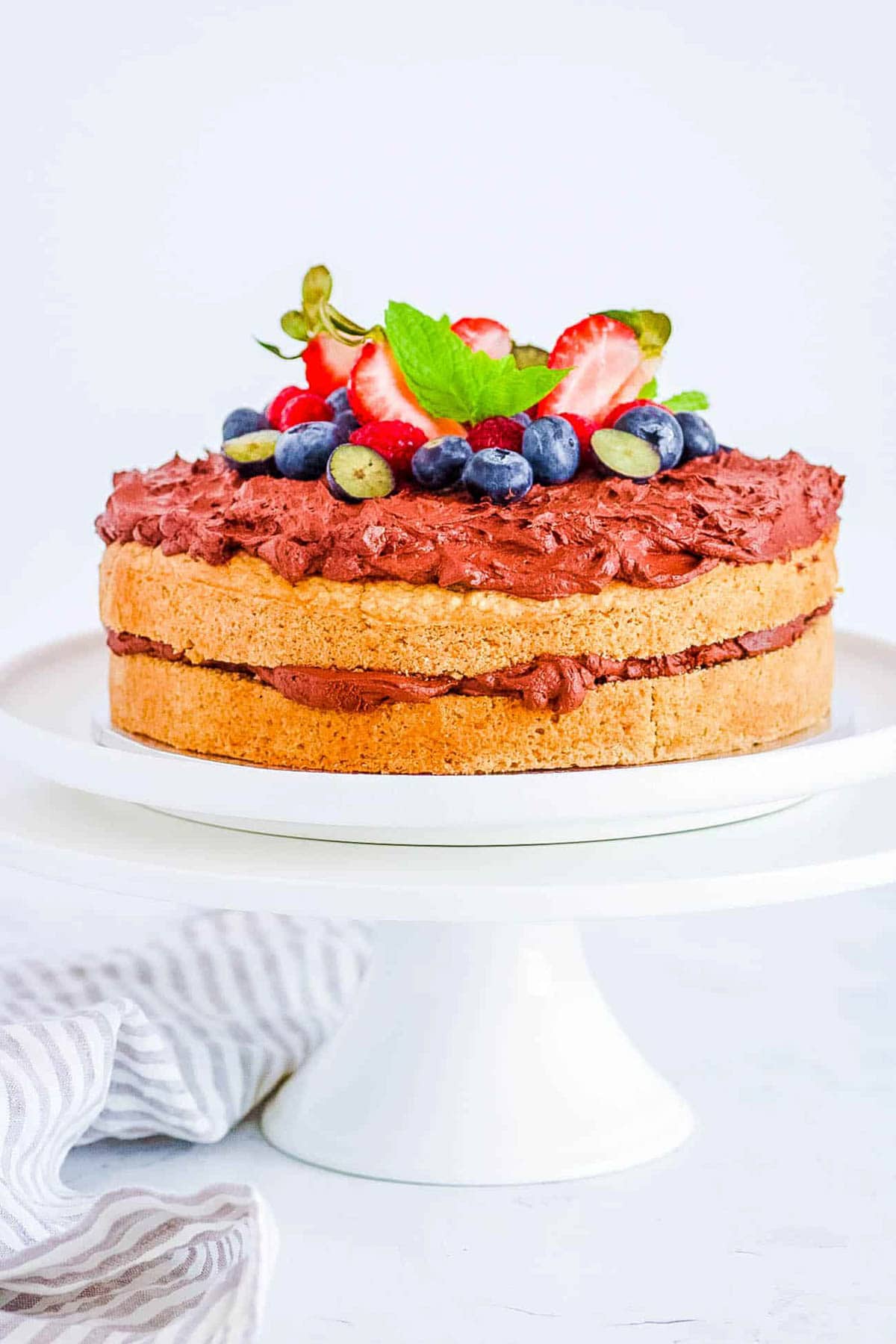
💭 Expert Tips
My #1 Secret Tip for this simple oat flour cake is to avoid over-mixing the cake batter.
Over-mixing develops the gluten in the flour, which can make the cake dense and tough. Even though vegan cakes often use gluten-free flour or alternative flour, the principle still applies. Over-mixing can incorporate too much air and affect the cake’s rise and crumb.
To avoid this, I mix the dry and wet ingredients separately and then combine them gently. Once the two mixtures come together, I stop mixing as soon as the ingredients are just combined.
It’s okay if there are a few lumps; these will usually work themselves out during baking. Using a spatula or a wooden spoon instead of an electric mixer can help maintain a lighter touch.
Other Tips To Keep In Mind:
- Every Flour Ratio Is Different: I do not substitute an alternative flour like coconut flour or almond flour for this recipe. Each flour responds differently to moisture so they aren’t 1:1 substitutes.
- Avoid The Top Rack: When baking, I place the cake on the rack toward the lower third of the oven. If it’s at the top, the outside can brown too quickly.
- Cool Completely: Allow the cake to cool completely before frosting or serving to ensure the texture sets properly.
- Check Expiration Dates: I use fresh baking powder and baking soda to ensure proper leavening and rise. These are common pantry staples that expire without us knowing.
📖 Variations
Oat Flour Chocolate Cake: I replace 1/2 cup of the flour with 3/4 cup of cocoa powder and then follow the recipe as directed.
Oat Flour Lemon Cake: I add 2 tablespoons of fresh lemon juice and the zest of 1 lemon to the batter.
Healthier, Low Sugar Version: For a healthier cake, I cut the sugar amount in the icing by half and use 1/4 cup of sugar in the cake batter. This reduces each slice to about 270 calories and 7 grams of sugar.
Oat Flour Cake With No Sugar: I use a 1:1 sugar substitute in place of white sugar, typically powdered monk fruit works well. I can also find powdered sugar substitutes in most baking sections to replace the sugar in the frosting.
Oat Flour Cupcakes: For oat flour cupcakes, I follow the recipe as written, then fill the cupcake tin about ¾ of the way full. I keep an eye on them as they bake, since cupcakes take less time to bake than a whole cake. I typically check in after about 20 minutes of baking. They are done when a toothpick comes out clean from the center.
🍽 Serving Suggestions
I love serving this vegan gluten-free vanilla cake at brunch parties, as a dessert, or even an afternoon pick me up. Here are some drinks and other ways I typically serve this treat.
With Toppings: While this cake is delicious as is, I’ll often add fresh strawberries, raspberries and blueberries on top as a garnish, crushed walnuts and pecans, a drizzle of vegan honey, and sometimes I’ll add a dusting of powdered sugar or a dollop of vegan whipped cream too.
Drinks: Hot drinks like coffee or tea pair well with this cake, but my kids love it when I serve this cake with a warm cup of healthy hot chocolate. If I need to increase protein, I’ll make them some protein hot chocolate. For a cool drink, a tall glass of dairy-free milk, iced tea, or even this honeydew milk tea would be a refreshing addition.
Other Desserts: When I’m making a spread of desserts, I like to pair smaller treats with a cake, like my vegan vanilla pudding, vegan s’mores, or my eggless fruit cake.
🧊 Storage Directions
When I have leftover vanilla oat cake, I like to tuck it away for a rainy day! Before storing, I always allow the cake to cool completely.
Room Temperature: If I don’t frost the cake, I store it at room temperature in a cake tin or air-tight container.
Refrigeration: When frosted, I store this cake in the fridge for 3-5 days in an airtight container. Sometimes, I’ll slice individual pieces for portion control and easier storage.
Freezing: While freezing the cake whole is an option, I like to freeze it in slices so I can thaw one slice at a time for an indulgent treat. I wrap each slice in plastic wrap, place them in a zip-top freezer bag, and freeze for up to 3 months. Then, I defrost in the fridge for a few hours and enjoy it cool, no reheating needed once it’s thawed. I follow the same process for cupcakes.
❓ Recipe FAQs
If this vegan, gluten-free oatmeal flour cake turns out too dense, it is likely that you have over-mixed the batter or used too much flour. To prevent over-mixing, I always recommend mixing ingredients just until they combine. A few tiny lumps are ok. To prevent using too much flour, I recommend spooning and leveling your dry ingredients instead of scooping them out with your measuring cup.
To get that perfect rise without eggs I really rely on the leavening agents. I like to check that my baking powder and baking soda are both fresh before using them. It is important that neither are expired and that you use the correct amount, as they are key to helping the cake rise appropriately.
Yes! I love making homemade oat flour and it requires minimal effort. I just pulse rolled oats in a food processor until it becomes a fine powder.
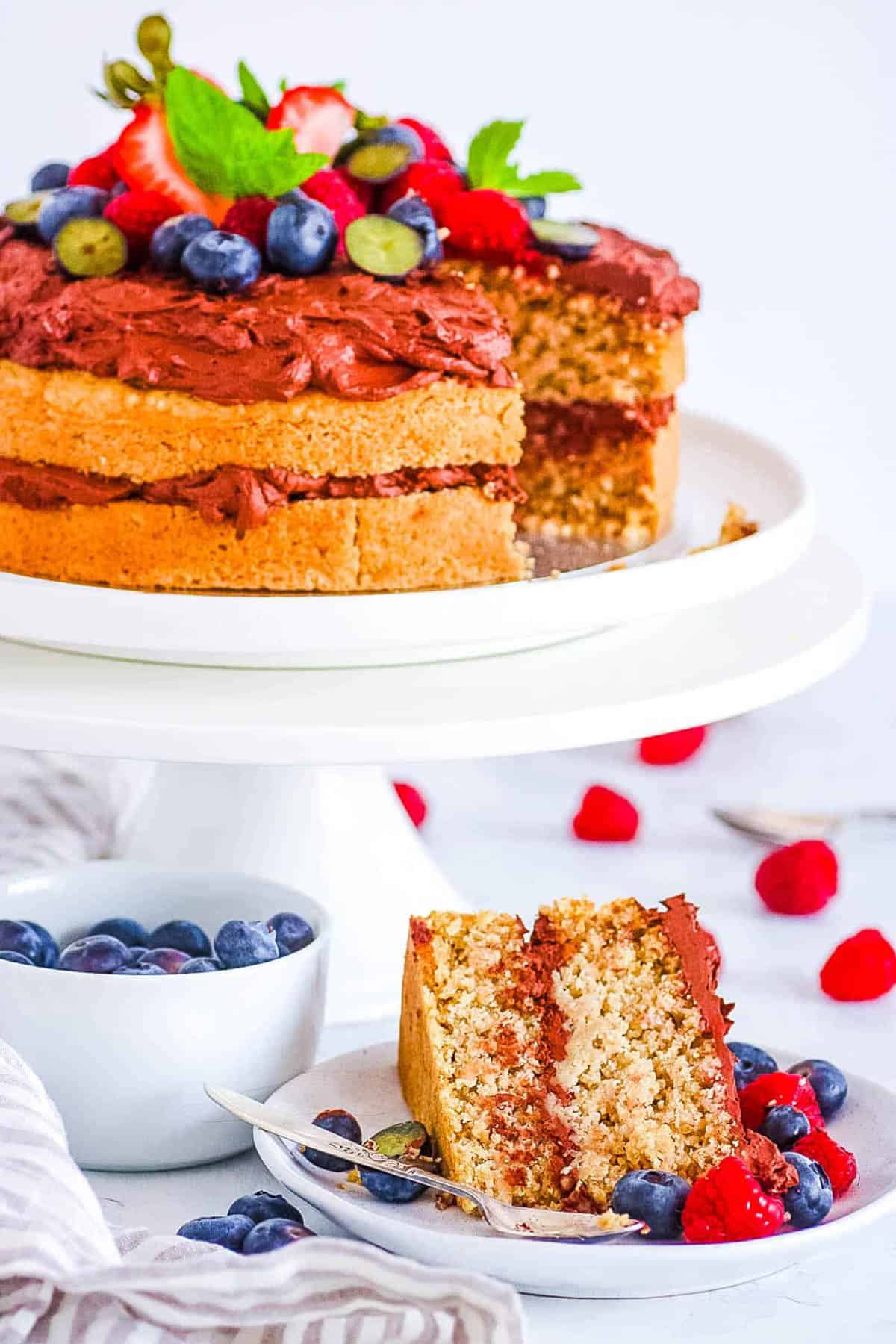
📋 Recipe Card
🎥 Watch How to Make It
Vegan Oat Flour Cake (Fluffy, Moist, and Gluten-Free!)
Ingredients
For The Cake
- 1¾ cups unsweetened soy milk
- 1½ tbsp apple cider vinegar
- 3 cups oat flour
- 1 cup gluten-free flour
- 1 tbsp arrowroot
- ¾ cup coconut sugar
- 3 teaspoon baking powder
- ¾ teaspoon baking soda
- pinch salt
- ½ cup olive or vegetable oil
- 1½ tbsp vanilla extract
For The Chocolate Frosting
- 1½ cup powdered sugar, sifted
- 1 cup unsweetened cocoa powder, sifted
- 1 cup vegan butter
- t teaspoon vanilla extract
- 4-5 tablespoons unsweetened soy milk
Equipment
- 8×8 Inch Cake Pan
- Electric Hand Mixer
Instructions
For The Cake
- Preheat the oven to 350 degrees F / 180 C. Line 8 inch round cake tin with parchment paper.
- Whisk together the soy milk and apple cider vinegar, set aside for 5 minutes.
- In a separate bowl mix together the oat and gluten free flours, arrowroot, sugar, baking powder, baking soda and salt.
- Pour the soy milk mixture, oil and vanilla extract into the flour mixture and stir until combined.
- Pour the cake batter into the prepared cake tin.
- Bake for 35-45 minutes or until an inserted skewer comes out clean.
- Remove and allow to cool for 10 minutes in the tin before turning out to cool completely on a cooling rack.
- When the cake has chilled completely, slice in half and set aside.
For The Frosting
- Add the vegan butter to a stand mixer or mixing bowl and use an electric hand mixer to whip the butter until light and fluffy.
- Add half of the cocoa powder and powdered sugar to the whipped butter and continue to mix until combined. Add in remaining cocoa powder, powdered sugar, vanilla extract and soy milk. Whip until fluffy and smooth. You may need to add a little more soy milk as you go, adjust the amount as needed.
- To decorate the cake – add an even layer of frosting to the bottom layer of the cake, top with the second layer of cake.
- Evenly distribute the remaining frosting over the entire cake and top with your favorite berries.
Notes
- To make homemade oat flour, blend rolled oats in a food processor until it creates a fine flour.
- If you have celiac disease or gluten intolerance, be sure to use gluten-free oat flour! Oats are processed in facilities with gluten-containing grains which makes cross contamination likely.
- Do not substitute an alternative flour like coconut flour or almond flour for this recipe. Each flour responds differently to moisture so they aren’t 1:1 substitutes.
- Whole grain oat flour can be found in the flour aisle near the alternative flours.
- It’s best to use oat flour in cake recipes that call specifically for it.
- Place the cake on the rack toward the lower third of the oven. If it’s at the top, the outside can brown too quickly.
- Soy milk can be substituted with almond milk or any other plant based milk.
- For a healthier cake, cut the amount of sugar by half in the icing and use 1/4 cup sugar in the cake batter. Then each slice will only have 270 calories and 7 grams of sugar.




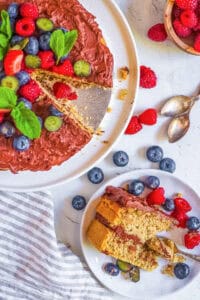
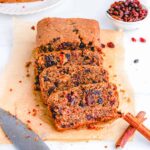
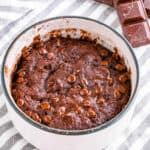
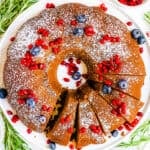





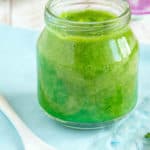







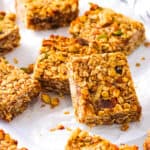




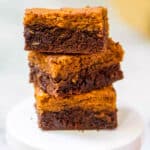







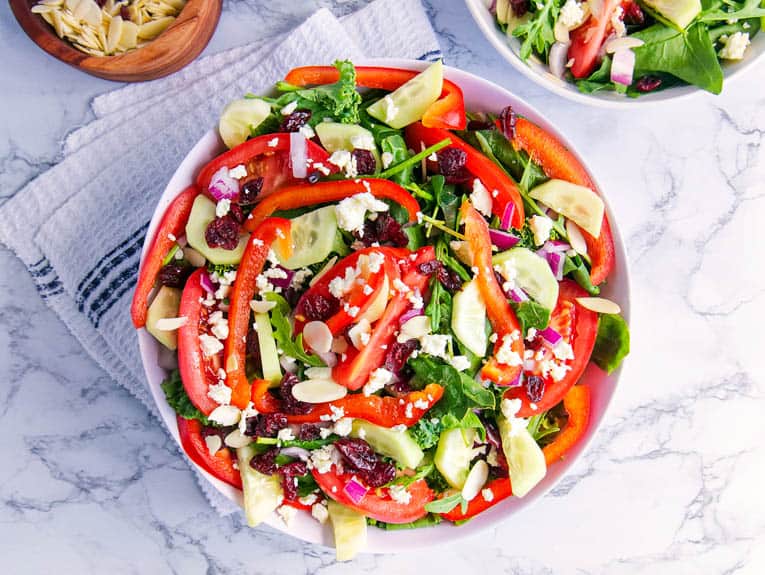


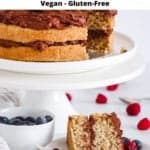
Hi!!!!
Can I substitute arrowroot powder with corn flour? If yes same quantity like arrowroot?
Hi Vaishnavi! I haven’t tried using corn flour in this recipe, but theoretically it should work as a 1:1 replacement for the arrowroot powder! If you do try it with corn flour let me know how it turns out!
This cake was so delicious! Really enjoyed that chocolate frosting. Definitely a vegan treat worth making time and time again!
Wooohoo! So happy to hear that Gina!
What a beautiful cake! I love that this is allergy friendly and so full of flavor!
Aw thank you so much Angela! Enjoy!
Beautiful cake, I love the texture of oat flour.
Thanks so much Sue! I know right? It gives it such a light but hearty texture!
This is such an easy, versatile recipe. I especially love the carrot cake variation!
Yay! Thanks Renee!
Great recipe for indulging without the guilt! I will surely be making it again!
Thanks Tavo! So glad you liked it!